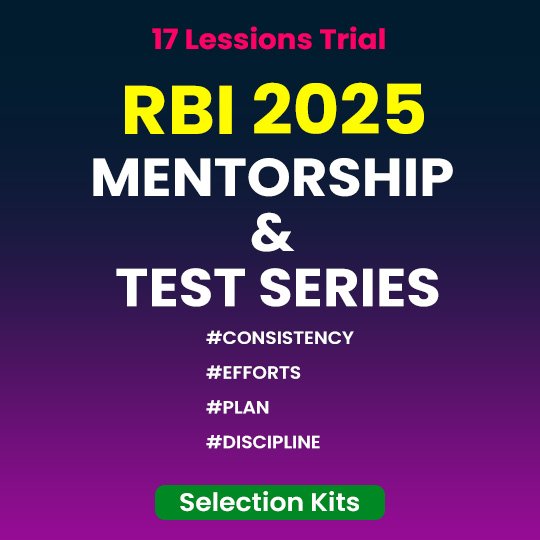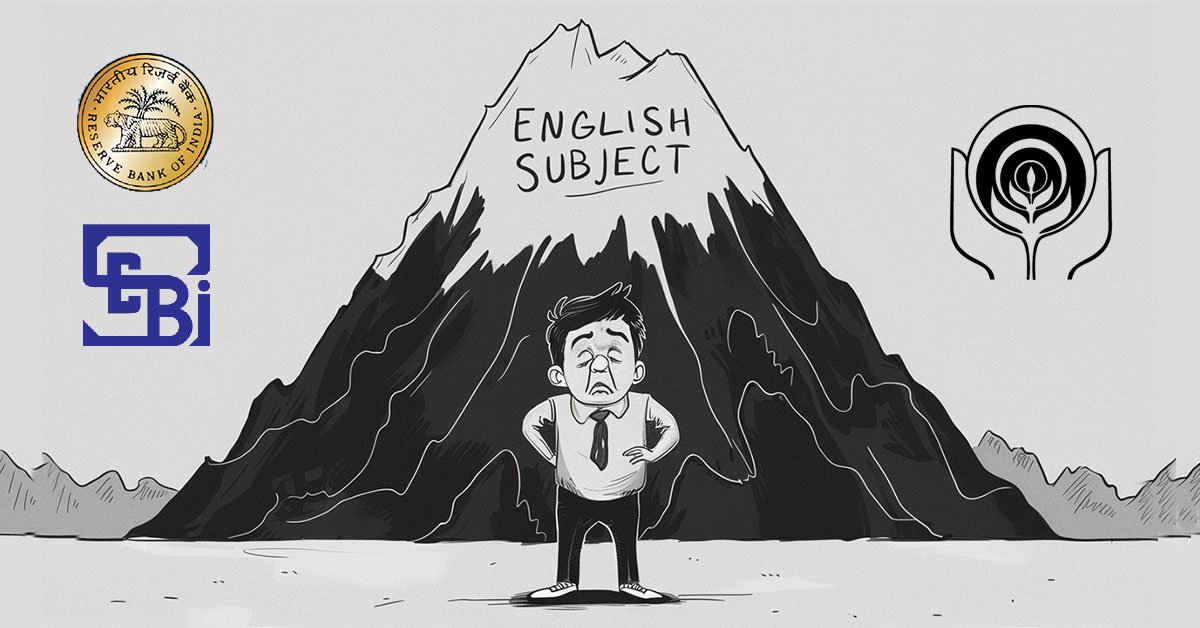Daily Current Affairs Quiz
18 November, 2025
National Affairs
1. National Gopal Ratna Awards 2025
Source: PIB
Context:
The Department of Animal Husbandry and Dairying under the Ministry of Fisheries, Animal Husbandry and Dairying has announced the winners of the National Gopal Ratna Awards (NGRA) 2025, one of India’s highest honours in the livestock and dairy sector. The awards will be presented on 26th November 2025 during National Milk Day celebrations by Union Minister Shri Rajiv Ranjan Singh Lalan Singh, along with other dignitaries.
About the Awards
- Established: 2021, under the Rashtriya Gokul Mission (RGM) launched in 2014.
- Conferred By: Department of Animal Husbandry & Dairying, Ministry of Fisheries, Animal Husbandry & Dairying (MoFAHD).
- Purpose:
- Promote excellence in dairy farming and indigenous cattle development.
- Encourage scientific breeding, cooperative dairy management, and improved milk productivity.
Award Categories & Prizes
- Best Dairy Farmer – Recognises farmers rearing indigenous breeds.
- Best Artificial Insemination Technician (AIT) – Awards technicians contributing to scientific breeding services.
- Best Dairy Cooperative / FPO / MPC – Highlights cooperative initiatives improving dairy production.
Cash Prizes:
- 1st Prize: ₹5 lakh
- 2nd Prize: ₹3 lakh
- 3rd Prize: ₹2 lakh
- NER/Himalayan Special Award: ₹2 lakh
- AIT Category: Certificate & memento only (no cash).
2. Subordinate Judiciary
Source: TH
Context:
A Constitution Bench of the Supreme Court recently linked stagnation in the subordinate judiciary to procedural inefficiencies and massive pendency, with 4.69 crore cases pending in district courts. The bench stressed that overburdened judges and archaic procedures reduce the effective delivery of justice.
Overview of Indian Lower Judiciary
Governance Structure:
- Constitutional Basis: Articles 233–237 assign recruitment, appointment, and administrative control jointly to High Courts and State Governments, maintaining federal balance.
- Three-Tier System:
- District & Sessions Courts: Highest trial courts in a district; handle serious civil and criminal cases.
- Senior Civil Judge / Chief Judicial Magistrate Courts: Mid-level adjudication of civil and criminal cases.
- Civil Judge (Junior Division) / Judicial Magistrate First Class: Handle lower-value civil suits and routine criminal cases.
- Administrative Control:
- High Courts supervise postings, promotions, discipline, and inspections.
- State Governments manage infrastructure, personnel support, and judicial service exams.
Recruitment Pathways:
- Lower Judicial Service: Fresh law graduates (0–7 years’ experience) start as Civil Judges.
- Higher Judicial Service: Advocates with 7+ years’ experience directly appointed as District Judges.
Initiatives to Improve Judiciary
- National Mission for Justice Delivery & Legal Reforms: Procedural reform, infrastructure upgrades, and accountability.
- Judicial Infrastructure Expansion: 22,372 court halls and 19,851 residential units funded with ₹12,101 crore.
- e-Courts Mission Mode Project (Phase III): IT upgrades in 18,735 courts, WAN connectivity, AI tools, and 1,814 e-Sewa Kendras.
- Fast Track & Special Courts: 865 FTCs and 725 FTSC/POCSO courts handling 3.34 lakh cases.
- Legislative Reforms: Amendments to NI Act, Commercial Courts Act, Arbitration Act, and Mediation Act streamline pre-trial procedures.
Problems in Subordinate Courts
- Structural & Procedural Overload: Clerical work consumes 2 hours/day, reducing trial and judgment time.
- Inexperienced Judicial Officers: Many recruits lack courtroom exposure, producing weak or incomplete orders.
- Archaic CPC & Procedural Bottlenecks: Multi-stage decrees, 106 rules under Order XXI, and mandatory pre-suit mediation delay justice.
- Infrastructure & HR Gaps: Persistent vacancies, shortage of stenographers, outdated records, and unstable connectivity.
- Legislative Ambiguities: Confusing Rent Act provisions and mandatory cooling-off periods in mutual divorce petitions.
- Execution Delays: 70% of civil decrees take 3–7 years to be realized.
3. India-Africa Relations
Context:
India’s strategic engagement with Africa has intensified ahead of the India–Africa Forum Summit (IAFS-IV). Experts emphasize the need to “connect, build, and revive” ties to strengthen economic, security, and development partnerships.
Historical Evolution of India–Africa Relations
- Civilisational Links:
- Centuries-old Indian Ocean trade in gold, spices, and textiles forged deep socio-cultural connections.
- Gujarati merchant networks and shared colonial experiences strengthened bonds.
- Political Solidarity:
- India supported African liberation movements through the Non-Aligned Movement (NAM) and anti-apartheid struggles.
- Coordinated decolonisation diplomacy at the UN during the Cold War.
- Post-1990s Phase:
- Economic reforms shifted India’s Africa policy toward investments, ITEC-driven capacity building, and cooperation in WTO, climate negotiations, and UN Security Council reforms.
- Contemporary Phase (2015–2025):
- IAFS-III (2015) brought together all 54 African nations.
- India opened 17 new embassies, scaled digital and development partnerships, and secured the AU’s permanent G20 membership (2023).
Key Areas of Cooperation
| Key Area | Highlights |
|---|---|
| Trade & Investment | $100B trade (2024–25); India 3rd-largest partner$75B FDI in telecom, hydrocarbons, pharma, infrastructure, digital services DFTP: 98.2% tariff-free access for 38 African LDCs |
| Development Partnership | $10B LoCs for 189 projects in 42 countries (power, irrigation, water, rail, rural electrification)e-VBAB platform for digital education & tele-medicine |
| Capacity Building | 40,000+ Africans trained under ITEC, ICCR, Pan-African e-NetworkIIT-M Zanzibar (2023) – AI & data science programs |
| Maritime & Security | AI-KEYME Naval Exercise (2025) – anti-piracy, humanitarian aid, maritime security with 9 African naviesMajor contributor to UN peacekeeping missions |
| Digital & FinTech | UPI, Aadhaar-like ID, and digital public infrastructure adoption in African countries |
| Energy & Climate | Solar & green energy via International Solar Alliance Collaboration in green hydrogen, EVs, and blue economy corridors |
4. Major Military Exercises in News
Context:
India is actively engaging in international defence collaborations, highlighted by two key exercises: Garuda-2025 and Ajeya Warrior-25.
Exercise Garuda-2025
- Type: Bilateral air combat exercise
- Nations Involved: India & France
- Host Location: Mont-de-Marsan Air Base, France
- Aim:
- Enhance air-combat interoperability
- Exchange operational best practices
- Strengthen strategic air cooperation
- Key Features:
- IAF Su-30 MKI jets operating alongside French Rafale fighters
- Simulated combat and complex air operations
- Tactical manoeuvres and operational synergy
- Reinforces the long-standing Indo-French defence partnership
Exercise Ajeya Warrior-2025
- Type: India–UK joint military training exercise
- Nations Involved: India & United Kingdom
- Host Location: Mahajan Field Firing Ranges, Rajasthan (Foreign Training Node)
- Aim:
- Enhance counter-terrorism tactical proficiency
- Foster joint mission planning and operational coordination
- Key Features:
- 240 personnel, equally from both armies
- Indian Army represented by Sikh Regiment troops
- Brigade-level planning, simulations, and field drills
- Focus on semi-urban warfare and integrated operations
- Conducted under a UN mandate, contributing to global peace and stability
5. Ajeya Warrior 2025 – India–UK Joint Military Exercise
Source: News on Air
What it is:
- The eighth edition of the biennial Ajeya Warrior exercise between India and the United Kingdom.
- Focuses on counter-terrorism operations, particularly in urban and semi-urban environments.
- Conducted under a United Nations mandate.
When & Where:
- Commencement: November 2025
- Duration: Until 30th November 2025
- Location: Mahajan Field Firing Range, Bikaner, Rajasthan, India
Participants:
- Indian Army representation: Sikh Regiment
- UK Army representation: British Army units
Banking/Finance
1. PayU Receives RBI Approval to Operate as Payment Aggregator
Source: TH
Context:
PayU, a leading diversified fintech platform, has received integrated authorisation from the Reserve Bank of India (RBI) to operate as a payment aggregator. The approval allows PayU to facilitate payments across online, offline (physical), and cross-border transactions, covering both inward and outward flows.
Payment Aggregator
A Payment Aggregator collects funds on behalf of a merchant from customers through online or offline digital payment methods (cards, UPI, wallets, net banking, etc.) and then transfers the money to the merchant after deducting applicable fees.
Key Functions
- Multiple Payment Channels: Accepts payments via credit/debit cards, UPI, wallets, net banking, and sometimes offline QR codes.
- Consolidation of Transactions: Aggregates payments from many customers and channels into a single settlement for the merchant.
- Risk Management & Compliance: Ensures secure transactions, fraud monitoring, and regulatory compliance (e.g., RBI guidelines).
- Simplified Onboarding: Merchants don’t need individual arrangements with banks or payment networks.
- Settlement to Merchants: Aggregators periodically transfer collected funds to the merchant’s account.
RBI’s “Guidelines on Regulation of Payment Aggregators and Payment Gateways” (July 2021):
| S. No. | Requirement | Details |
|---|---|---|
| 1 | Incorporation | Must be a company incorporated in India under the Companies Act, 2013. Foreign entities cannot operate directly as a PA. |
| 2 | Net Worth | Minimum initial net worth: ₹15 crore for new PAs. RBI may require net worth to increase as operations scale, ensuring financial stability. |
| 3 | Regulatory Approvals | Must obtain authorisation from RBI before commencing operations. Only authorised PAs can handle customer payment instruments and collect funds on behalf of merchants. |
| 4 | Fit & Proper Criteria | Promoters, directors, and key management personnel must meet RBI’s fit and proper requirements: integrity, reputation, competence, no prior convictions/defaults, adequate experience in financial services/technology. |
| 5 | Governance & Risk Management | Must have Board-approved policies for operational risk, fraud management, IT security, cyber risk, data protection, and customer grievance redressal mechanism. |
| 6 | Segregation of Funds | Customer funds cannot be used for PA’s own business. Funds collected on behalf of merchants must be in a separate “trust account” and remitted as per RBI timelines. |
| 7 | Operational Requirements | Compliance with RBI’s KYC, AML/CFT norms; maintenance of transaction records; conduct risk assessments; ensure secure transaction processing. |
| 8 | Capital & Insurance | Maintain sufficient capital buffers; may require insurance coverage for operational or cyber risks. |
| 9 | Technology & Security Standards | Implement end-to-end encryption, tokenisation, PCI DSS standards for card payments; regular system audits and penetration testing. |
2. Darwinian Adaptation Beats Lazy Banking
Source: ET
Context:
Uday Kotak highlights the urgent need for Indian banks to adapt amid rising financialization, shifting household savings behavior, and increasing competition from non-banking financial services and digital investment platforms.
Key Highlights:
- Changing Savings Behaviour:
- Indian households are moving from ‘lazy savings’ in banks to active equity and mutual fund investments.
- Savers are becoming investors, increasingly selective about where their money is parked.
- The cost of intermediation in banks is high compared to mutual funds and other financial services, reducing banks’ competitive advantage.
- Need for Competitive Adaptation:
- Intermediation and regulatory cost differentials are expected to converge as other financial services mature and develop independent distribution.
- Banks will need to innovate to retain customers as competition from digital platforms and non-bank services grows.
- Role of Technology:
- Digital tools reduce dependence on physical branches, particularly benefiting private banks competing with large public sector banks.
- Technology empowers customers to switch investment options easily, making customer retention a key challenge.
- Banks must leverage tech for personalisation, efficiency, and better customer engagement.
- Darwinian Banking:
- Banks must undergo Darwinian adaptation, evolving in response to market and behavioural shifts.
- Social obligations, such as financial inclusion and priority lending, must continue alongside innovation.
Key Terms:
Darwinian Adaptation
- Origin: The term comes from Charles Darwin’s theory of evolution, where organisms survive by adapting to changing environments (“survival of the fittest”).
- In a financial/banking context: It means banks or financial institutions must evolve continuously to survive in a rapidly changing ecosystem.
- Example: Adopting digital platforms, AI-driven customer services, and new investment products to match changing customer behavior.
Lazy Banking
- Meaning: Refers to banks that stick to traditional methods without innovating, relying only on old models like deposit-lending, manual processes, or conventional branch services.
- Effect: These banks risk losing customers, market share, and relevance, especially with fintechs, NBFCs, and digital investment platforms growing.
3. Listing Obligations and Disclosure Requirements (LODR)
Source: Mint
Context:
The Securities and Exchange Board of India (SEBI) has initiated a comprehensive review of the Listing Obligations and Disclosure Requirements (LODR), aiming to simplify and streamline corporate compliance norms for listed companies.
What is LODR?
The Listing Obligations and Disclosure Requirements (LODR) are a set of regulations framed by the Securities and Exchange Board of India (SEBI) under the SEBI (Listing Obligations and Disclosure Requirements) Regulations, 2015.
They govern all companies whose securities are listed on stock exchanges in India and aim to ensure transparency, accountability, and investor protection.
Objectives
- To maintain fair and efficient securities markets.
- To ensure timely disclosure of material information to investors.
- To provide continuous compliance requirements for listed companies.
- To safeguard the rights of shareholders, particularly minority investors.
Key Provisions
LODR regulations cover various aspects of listing compliance, broadly classified as:
A. Continuous Disclosure Requirements
- Material events disclosure: Any information that may influence investor decisions (e.g., mergers, acquisitions, change in management, financial results).
- Financial results reporting: Quarterly, half-yearly, and annual financial statements must be filed with stock exchanges.
- Shareholding patterns: Details of promoter and institutional holdings, and changes in holdings.
- Related party transactions: Disclosure of transactions with promoters, directors, or affiliates.
B. Corporate Governance Requirements
- Board composition: Independent directors, audit committee, nomination and remuneration committee, and stakeholder relationship committee.
- Code of conduct: For directors and senior management.
- Risk management: Policies for identifying and mitigating risks.
C. Other Compliance Obligations
- Investor grievances redressal: Establishing processes to address complaints promptly.
- Annual report filing: Must include disclosures on corporate governance, CSR, and other regulatory requirements.
- Quarterly reporting of defaults: Debts or loan defaults must be reported to stock exchanges.
Penalties for Non-Compliance
- Monetary fines on the company and its officers.
- Suspension or delisting of securities from the stock exchange.
- Disciplinary actions by SEBI on directors and management.
4. RBI’s Floating Rate Bonds
Source: ET
Context:
With bank deposits and small-savings schemes offering modest returns, risk-averse investors are increasingly turning to RBI Floating Rate Bonds, a government-backed debt instrument with a seven-year lock-in period. These bonds are gaining traction among individuals seeking safer and higher-yielding alternatives.
What are Floating Rate Bonds?
Floating Rate Bonds (FRBs) are debt securities issued by the Reserve Bank of India (RBI) or other entities in which the interest rate is not fixed, but periodically reset based on a benchmark rate.
Unlike fixed-rate bonds, FRBs protect investors from interest rate risk by adjusting the coupon payments according to market conditions.
Key Features
| Feature | Description |
|---|---|
| Issuer | RBI (on behalf of Government of India) or financial institutions. |
| Interest Rate | Linked to a benchmark such as Treasury Bill yield or Government Security (G-Sec) rate. The rate is reset at predetermined intervals (e.g., every 6 months). |
| Tenure | Usually medium to long-term, often ranging from 5 to 10 years. |
| Face Value | ₹1,000 per bond (typical for retail investors), but can vary. |
| Coupon Payment | Periodic interest payment (e.g., semi-annual) that fluctuates with benchmark rate movements. |
| Marketability | Listed on stock exchanges for trading; investors can buy and sell before maturity. |
Types of Floating Rate Bonds by RBI
- RBI Floating Rate Savings Bonds (Retail): Targeted at individual investors; interest is linked to short-term G-Sec rates.
- FRBs for Institutional Investors: Offered to banks, mutual funds, and insurance companies; often in larger denominations and longer tenure.
Advantages
- Protection against interest rate risk: Returns rise when market interest rates increase.
- Predictable benchmark linkage: Transparent and linked to RBI-determined rates.
- Attractive during rising rate scenarios: Investors can earn higher coupons compared to fixed-rate bonds.
Disadvantages
- Lower returns when rates fall: Coupon payments decrease if benchmark rates decline.
- Complexity for small investors: Interest calculations change periodically, making it slightly harder to estimate returns in advance.
- Market price volatility: If sold before maturity, the bond price may fluctuate based on prevailing interest rates.
Agriculture
1. Rajasthan Launches Chatbot-Based Veterinary Service
Context:
The Rajasthan Animal Husbandry Department has introduced an innovative digital chatbot platform to provide livestock owners with quick access to veterinary advice.
Objective
- Ensure fast, accessible veterinary care at the doorstep of livestock owners.
- Reduce animal mortality through timely diagnosis and expert consultation.
- Digitally integrate animal healthcare services to strengthen rural livelihoods and the livestock economy.
Key Features
- Symptom Reporting: Farmers can report livestock symptoms via chatbot interfaces, including WhatsApp.
- Instant Consultation: Certified veterinary doctors provide real-time medical guidance.
- AI Integration (Future): Plans to automate disease analysis for faster diagnosis.
- Transparent Service: Faster and reliable treatment reduces delays and improves service efficiency.
Facts To Remember
1. Ghaziabad Police Launches Online Portal to Track Cases
The Ghaziabad Police has introduced the Commissionerate Courts Monitoring System (CCMS), a web-based platform aimed at improving transparency, efficiency, and accountability in policing and judicial monitoring.
2. Construction Workers’ Federation Critiques Digital Labour Initiatives
The Union Labour Ministry recently launched multiple digital initiatives for construction workers, including the Digital Labour Chowk portal and app, Labour Felicitation Centres (LCFCs), and the Online Building and Construction Workers Cess Collection Portal. These measures are intended to modernise worker registration, benefit disbursement, and data management in the construction sector.
Key Terms (One-Liner Explanations)
- Digital Labour Chowk – A portal and app launched by the Labour Ministry to digitally manage worker registration and benefits.
- Labour Felicitation Centres (LCFCs) – Centres meant to recognise and support construction workers, now part of digital initiatives.
- Online Building and Construction Workers Cess Collection Portal – Platform for managing collection of employer cess for worker welfare schemes.
- CWFI – Construction Workers’ Federation of India, a national trade union body representing construction workers.
- Building and Other Construction Workers Act, 1996 – Legislation ensuring welfare, registration, and social security benefits for construction workers.
3. Goa Police has become the first state police force in India to achieve a 100% response rate for cyber fraud complaints.
They reportedly received over 5,000 calls, of which 581 were converted to formal complaints. Their cloud-based 1930 cyber helpline center plays a key role in this system. The initiative has strengthened coordination with financial institutions, allowing the police to trace and prevent financial losses.
4. Government Launches ‘YUVA AI for ALL’ Free National AI Learning Course
The Government has launched YUVA AI for ALL, a free national course to help everyone understand Artificial Intelligence.
5. IITF 2024
The ongoing 44th India International Trade Fair (IITF) at Bharat Mandapam in New Delhi, will open for the general public from tomorrow.
6. National Padyatra Announced to Mark 150th Birth Anniversary of Sardar Patel
The Ministry of Youth and Sports Affairs announced a national level padyatra to commemorate 150th anniversary of Sardar Vallabhbhai Patel.
7. UK Named Country Partner for Hornbill Festival 2025 in Nagaland
The Government of Nagaland has announced the United Kingdom as the country partner for the upcoming Hornbill Festival 2025, to be held from 1 to 10 December at Kisama, Kohima.



















